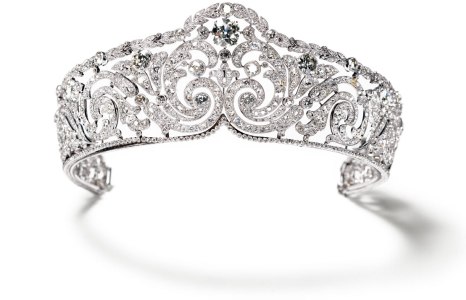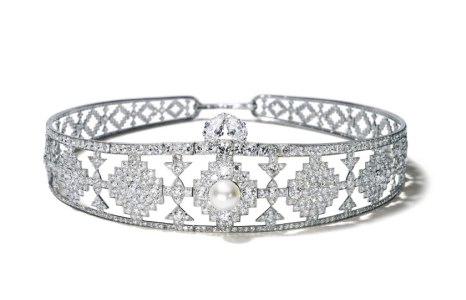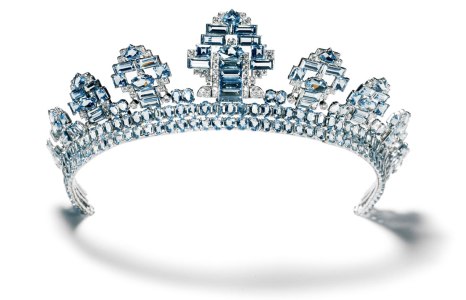The Art of Cartier

Head Ornaments

Adopted as an insignia of royal power, the tiara evolved over the centuries into increasingly precious versions that were symbols of the high rank of the wearer. It returned to favour in the 19th century and continued to exert its fascination until the end of the First World War. Cartier’s first large tiaras were recorded at the turn of the 20th century. While some were still made in gold¬backed silver, most were crafted from platinum. Garland-style jewellery, inspired by decorative motifs of the 17th and 18th centuries, was a perfect match for the requirements of Belle Époque fashion [fig. 2].

Fig. 2. ScrollTiara
- Propiedad
- Cartier Paris, 1910
Just as imposing devant de corsage were held in place by the corset, large tiaras were secured by the hair drawn back into a chignon.
From 1907, the Russian influence produced marvels known as kokoshnik (Russian for “cock’s comb”) inspired by a headdress in folk costume. To lighten the heavy proportions suggested by the kokoshnik, solid form, Cartier made some with diamond drops suspended within the mount.
The years between the two world wars were times of great change. A period of short-lived prosperity, technical innovation and the emancipation of women gave way to the worst economic depression ever. Still, the newly conquered freedom transformed the way women dressed and wore their hair. Heavy tiaras and imposing devant de corsage no longer had their place. Worn on the forehead, the bandeau was now in fashion [fig. 3].

Fig. 3. Bandeau
- Propiedad
- Cartier New York, 1924
Fashion changed again in the 1930s with the return of a more feminine silhouette, a marked waistline and longer hair. Although passé in Paris and New York, tiaras were still called for at the royal court in London. However, a sign of difficult economic times, so-called “fine” stones replaced more costly diamonds [fig. 4].

Fig. 4. Tiara.
- Propiedad
- Cartier London, 1937


